Tuesday, 22 September 2009
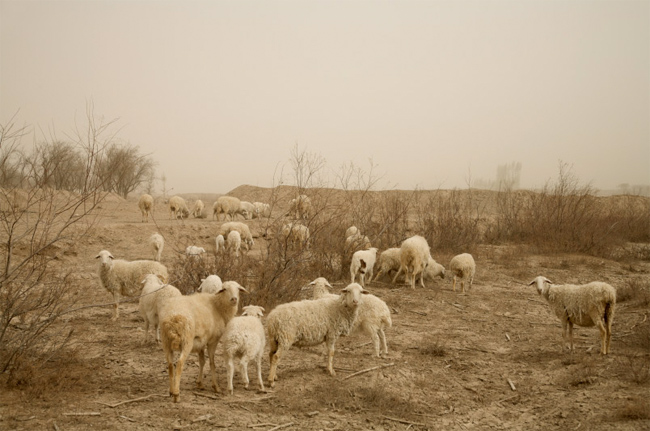
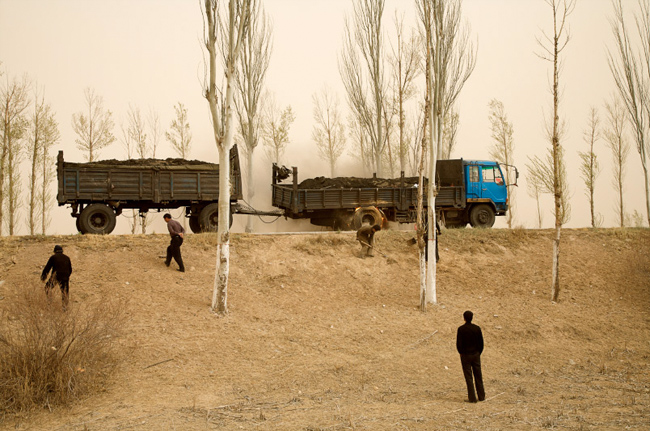
I heard of an altercation between man and animal over the radio the other day. This man, acting on his impulses to be at one with nature, built his house in the mountains. To protect himself from the wildlife that inevitably pay him a visit in search of food, he installed traps around his property. Strong and instinctive as they are, animals are no match for the well-developed brain of man, nor do they possess technology that rival ours. As are the endings of other similar incidences, the animal kingdom loses yet again to our rapid encroaching on their territory. What happens to them? Do we take our natural resources for granted? Does nature heal itself?
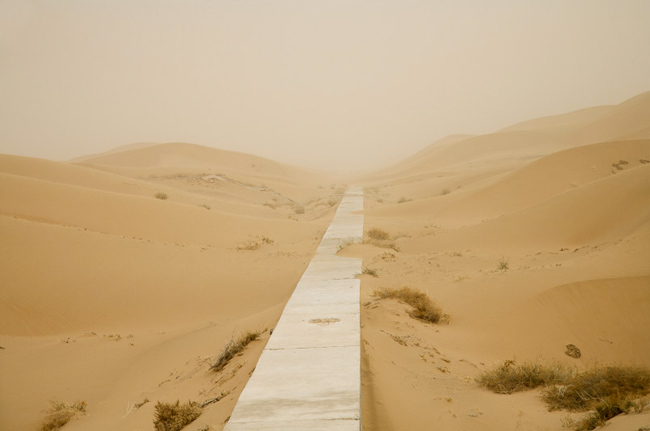
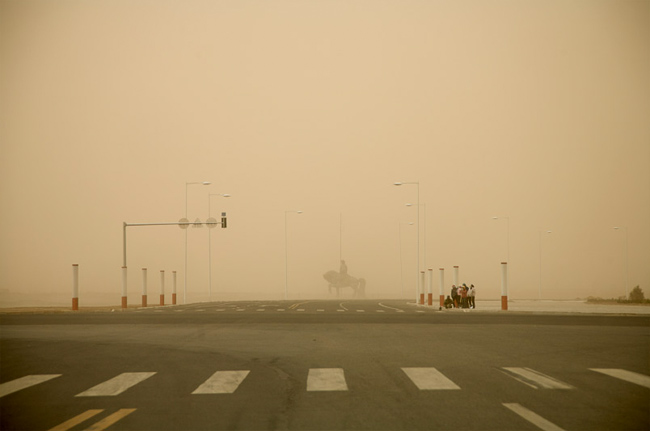
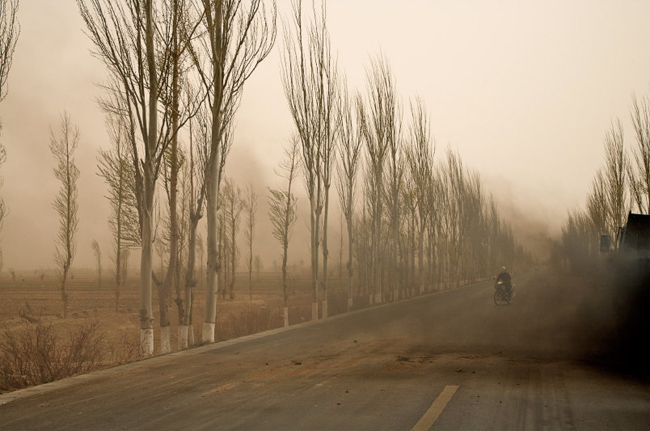
“Deserts now cover 18% of China, and a quarter of them were caused by ecologically damaging human activities. Overexploitation of arable land, overgrazing and increasingly deep drilling for water are at the root of what has become the Chinese dust bowl - a phenomenon the likeness of which has not been seen since the 1930’s, when the American Midwest and Canadian Prairies suffered from a devastating drought. China’s situation is quickly becoming the world’s most massive and rapid conversion of arable land into barren sand dunes. The resulting dust is picked up by the wind and transported, in the form of giant sandstorms, all over China and into Japan and Korea - even all the way to North America. In an effort to reverse the situation, the Chinese government has initiated the largest environmental restoration initiative the world has ever seen, and has begun a mass exodus of “environmental refugees,” displaced by the advancing sand.”
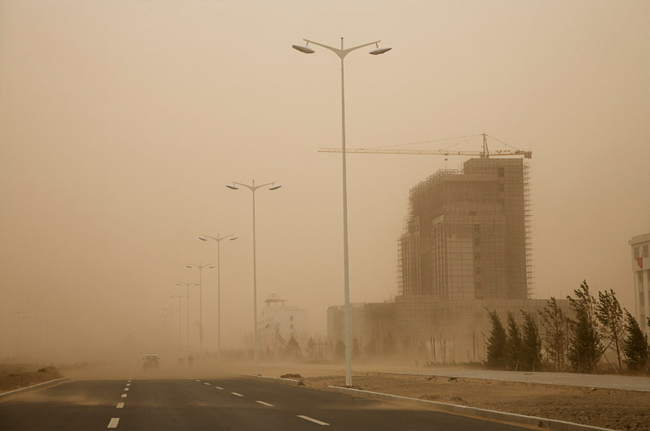
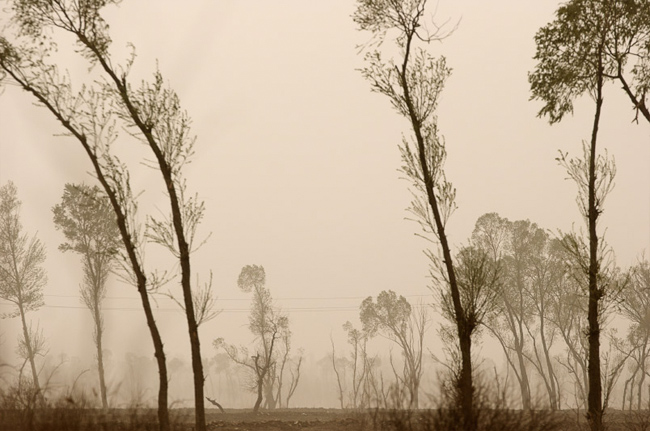
Perhaps nature can heal itself. And perhaps it does so with a vengeance…
Please go to Benoît Aquin’s site to view more of his work.
Tags: China, Photography
Posted in Uncategorized | No Comments »
Monday, 21 September 2009
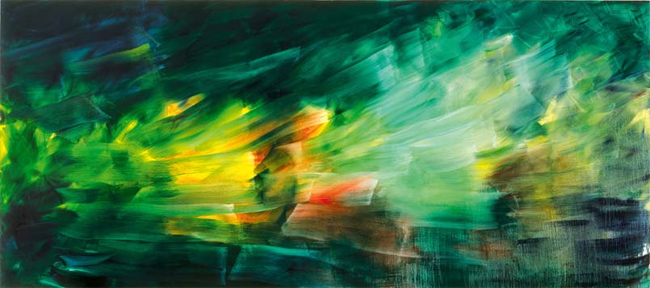
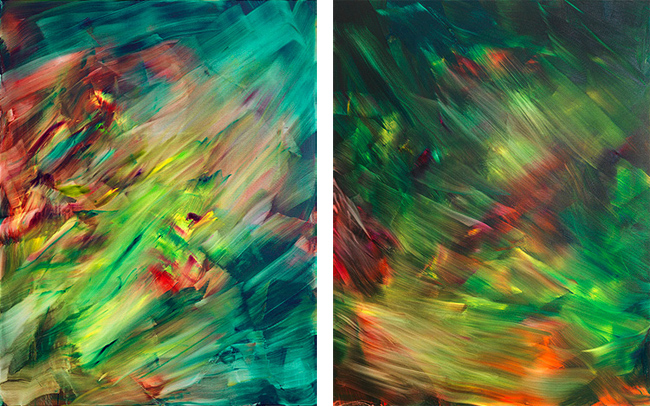
To create movement from paint and brush strokes is no easy feat. I have tried to no avail to perfect my skills in this regard. It is therefore not surprising that Austrian artist Herbert Brandl’s work floored me entirely. Majestic and visceral, they are rich with allusions to exuberant natural forces and atmospheric phantasmagoria.
“Precious few strokes of a deep, cold grey accent this seemingly chaotic field of brush-scribbles. One long diagonal brushmark passes across the middle, near to a single large dab of golden yellow, the only non-blue in the show’s seven works… Brandl blends a taste for nature’s most dramatic visual effects with a talent for submerging his imagery just below the threshold of representation, making pictures that are always becoming, rather than being. What at first looks like an arbitrary field of artfully invented marks resolves itself upon further looking into a realistic portrayal… All the explosive splatters and running, chaotic paint, which seemed a mere record of action and chance, prove crucial to the depiction. They fill with specific meaning and are revealed to be necessary, even inevitable.”
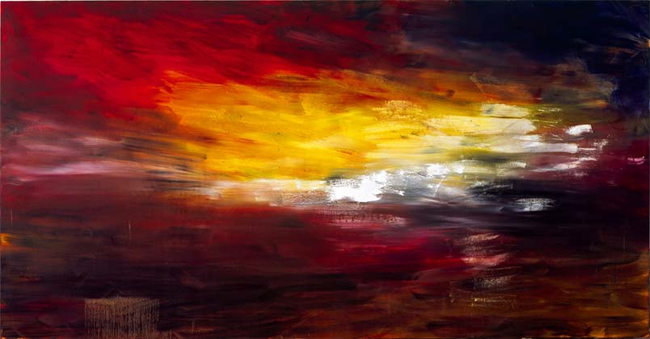
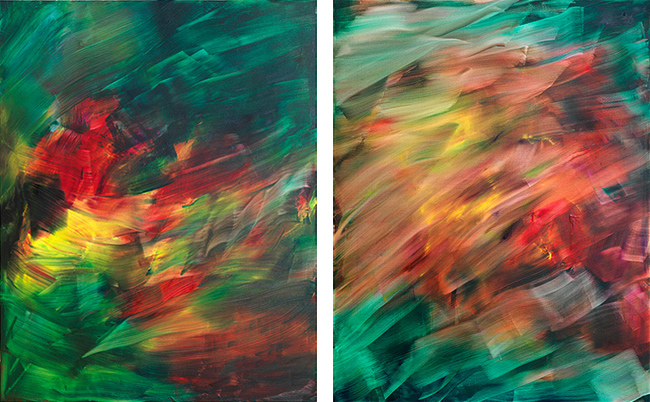
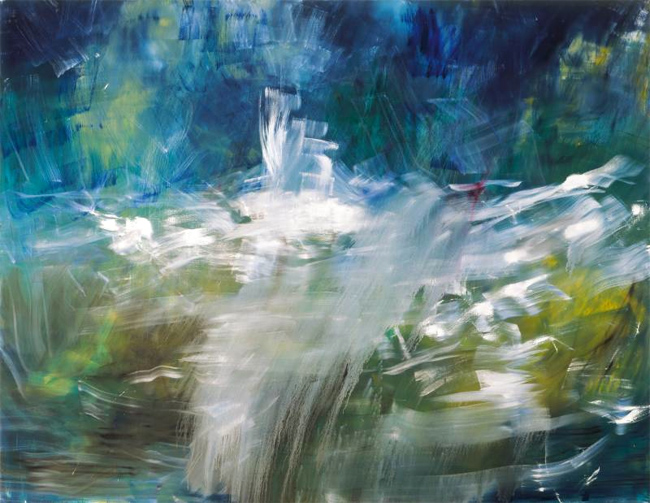
Excerpt from “The Vienna Minute”, written by Abraham Orden. Please visit Brandl’s to view more of his staggering work.
Tags: Art, Painting
Posted in Uncategorized | No Comments »
Monday, 21 September 2009

ONE cannot choose but wonder. Will he ever return? It may be that he swept back into the past, and fell among the blood-drinking, hairy savages of the Age of Unpolished Stone; into the abysses of the Cretaceous Sea; or among the grotesque saurians, the huge reptilian brutes of the Jurassic times. He may even now—if I may use the phrase—be wandering on some plesiosaurus-haunted Oolitic coral reef, or beside the lonely saline lakes of the Triassic Age. Or did he go forward, into one of the nearer ages, in which men are still men, but with the riddles of our own time answered and its wearisome problems solved? Into the manhood of the race: for I, for my own part cannot think that these latter days of weak experiment, fragmentary theory, and mutual discord are indeed man’s culminating time! I say, for my own part. He, I know—for the question had been discussed among us long before the Time Machine was made—thought but cheerlessly of the Advancement of Mankind, and saw in the growing pile of civilization only a foolish heaping that must inevitably fall back upon and destroy its makers in the end. If that is so, it remains for us to live as though it were not so. But to me the future is still black and blank—is a vast ignorance, lit at a few casual places by the memory of his story. And I have by me, for my comfort, two strange white flowers—shrivelled now, and brown and flat and brittle—to witness that even when mind and strength had gone, gratitude and a mutual tenderness still lived on in the heart of man.
Excerpt taken from Herbert Geroge Wells’ novel “The Time Machine”. Wells would be 143 today had he lived to see the influence his legacy on a whole generation of science fiction aficionados.
Read some of Wells’ work at Bartleby. Image from Life.
Tags: Tribute
Posted in Uncategorized | No Comments »
Saturday, 19 September 2009

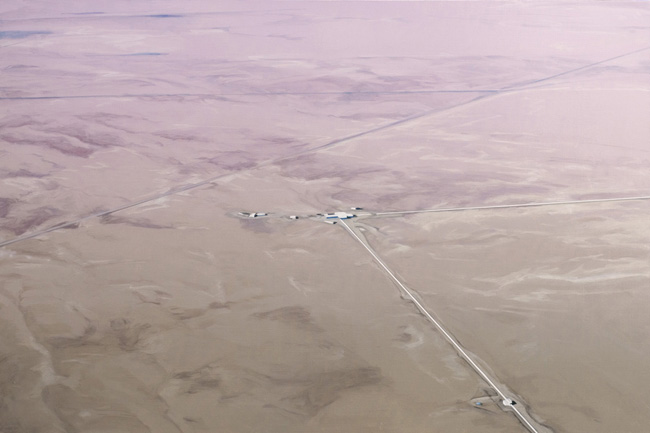
Conflict involves opposing parties. When there is a war between two countries, the two are involved in a conflict. They will perhaps lure their allies into the conflict, and all sides will suffer casualties. We cry for the casualties and decry the war. Do we ever cry for the battlefield? Have we ever? This sullen party hurts too…
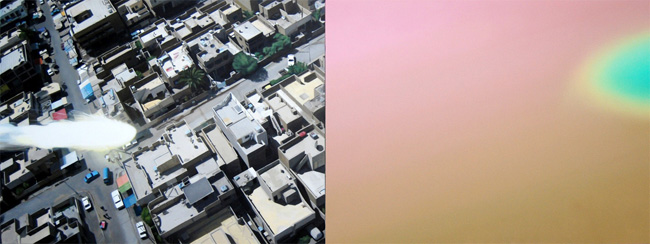
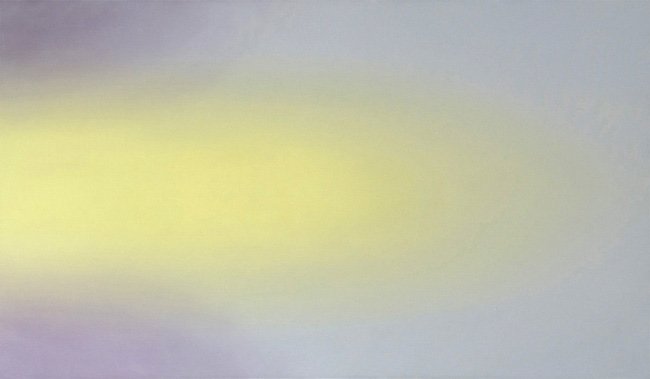

“For the past several years I’ve been working on the themes of conflict and unseen forces. My last show was called Force Against Force, and was comprised of diptychs, each of which included an abstract side and a representational side. The pieces were about explicit conflict, whether naturally-occurring or human-made… My current show, Fade, is about the desert, the Cold War, and the development of nuclear weapons. This is a very personal subject for me — I grew up in a Cold-War town, near the Hanford Site in the desert steppe of South-Eastern Washington State. The landscape there is dotted with structures for the production or plutonium, or the storage of nuclear waste. The physical aftermath of the US-USSR conflict is really only visible at Hanford, and similar sites throughout the US and former Soviet Union. One of the main Soviet sites, Semipalatinsk, is located in a steppe which looks a lot like Hanford.”
“At the same time the desert landscape is sublimely beautiful. Metaphorically, the desert is the place one goes to be alone, to reflect, and reconsider one’s place on the map. It is a harsh place, unsuitable for human life, but because it is so inhospitable it is also quiet, and a perfect place to think. Now that I live in New York, I find that I really miss being the wide-open sky, the blistering sun, and that sense of perspective.”
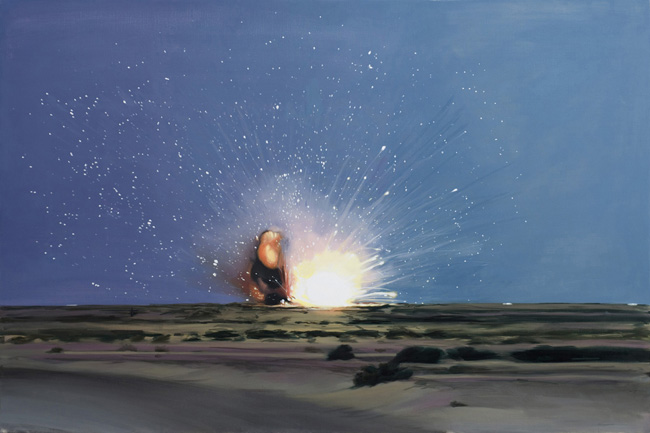
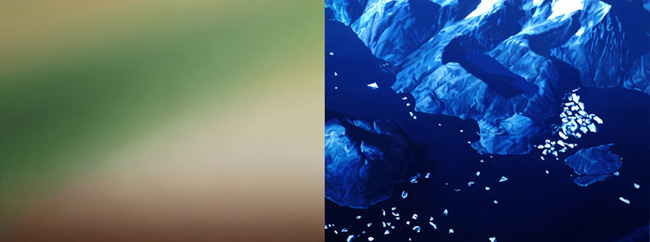
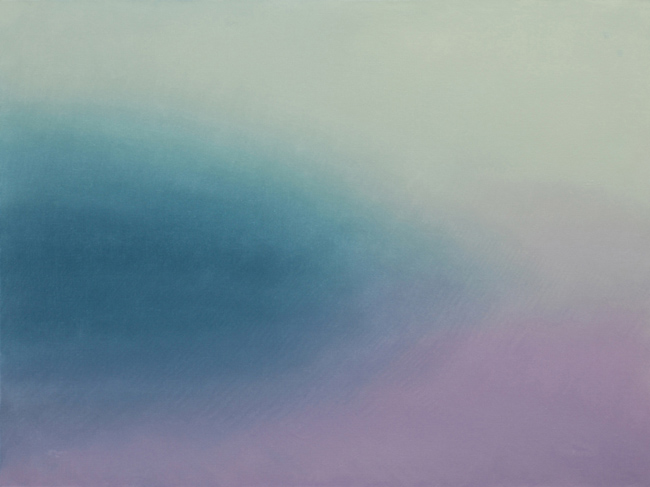
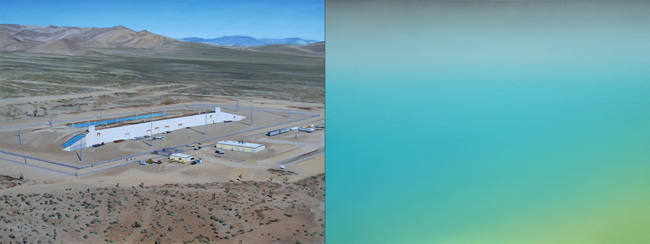
“Color is the most important part of the work — it sets the tone for the painting, and can change the meaning of the image. The colors in Fade are the subtle tones of desert steppe: greys, ochres, pinks, sage-greens, and the clear blue of the sky.”
As stunningly beautiful these landscapes are, is it not time to think about the realities of our life? Why do we continually let greed, hatred and non-existent beings control our lives?
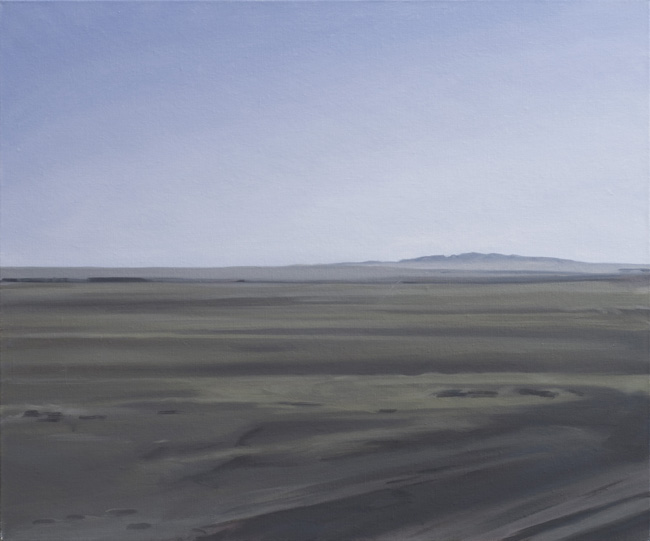
Text and images kindly permitted to be republished on this blog for the artist himself. Please visit LoPresti’s site to view more of his work.
Tags: Art, Painting
Posted in Uncategorized | No Comments »
Wednesday, 16 September 2009


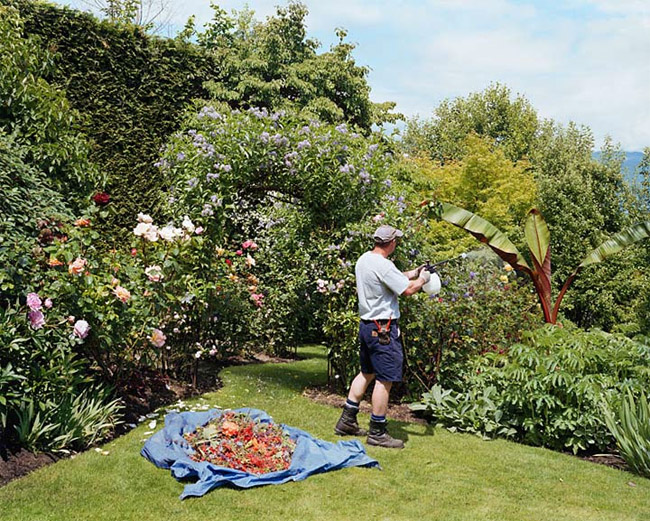
I recently tried my hand at typing on a typewriter - it forces you to exert a lot more pressure than you would when performing the same task on your computer keyboard. I was amazed at how closely typing on a typewriter parallels the playing the piano. I am a classically-trained pianist, albeit a hobbyist only, but typing on a typewrite proved to quite the finger workout! I really never made that connection before, and it prompted me to seek out other activities that I do, whose motions and intentions can also be translated to another activity. And this was what led me to Canadian photographer Scott McFarland’s work:
“When I was taking photographs of gardeners occupied by their everyday activities, I could see similarities to my own actions with photography, including printing in the darkroom. In Pouring, the figure is emptying a container of potassium permanganate solution into water, which will cause a reaction depending on levels of other chemicals in the water. In this case, the pond is home to koi so he is balancing the PH levels for the fish. In relation to photography, there is a way to check on the exhaustion level of the fix by using a product called “hypo check.” I regularly pour this into the fix to ensure the solution is still performing its task.”
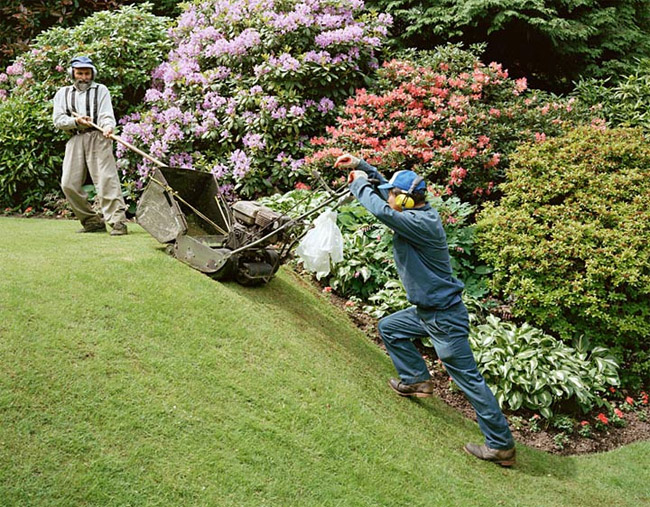


Interview excerpt from Canadian Museum of Contemporary Photography. Please visit McFarland’s website to view more of his work.
Tags: Canada, Photography
Posted in Uncategorized | No Comments »
Tuesday, 15 September 2009
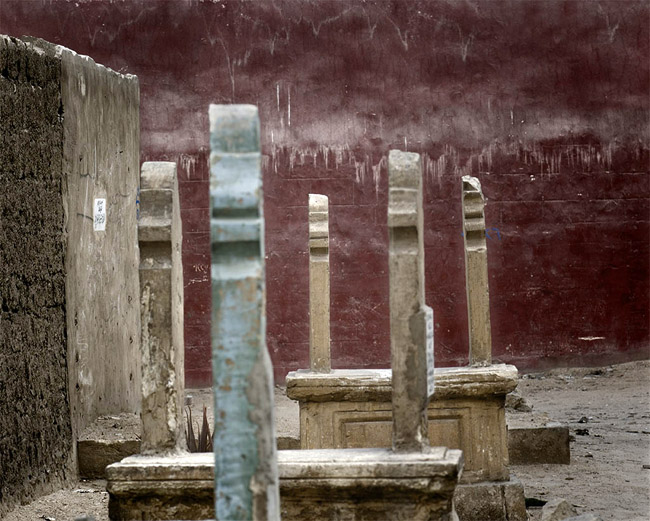

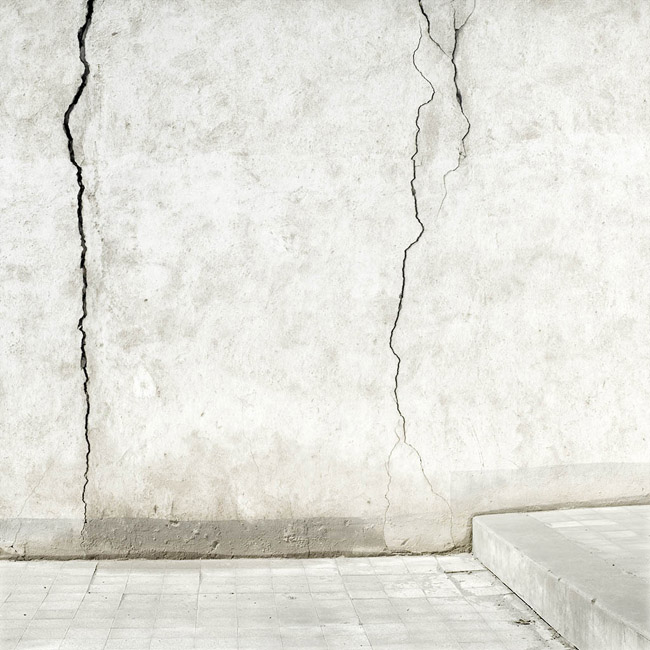
Vancouver is a very young city. Some are of the opinion that, since Vancouver has seen so little history, it is void of personality and characteristic. Perhaps so. With only a few truly outstanding works of architecture, the Vancouver cityscape does seem rather dull. However, have you ever really paid attention to the details - the minutiae that you simply take for granted in your daily scurries from home to work and vice versa? It is really only then that one truly experiences the space around us - the fine cracks on the wall, the leaf imprint left on undried cement pavements, that odd piece of sculpture that has always been there, but you simply never noticed…
“My projects are about the cities. Space and living are the major themes in my projects. I am interested in different questions: how a single person dissolves into the mass of the city, whether it is a place adapted for social living, how [individuals] change the spaces, etc… My work focuses on things that [are there but have never really seen clearly before].”
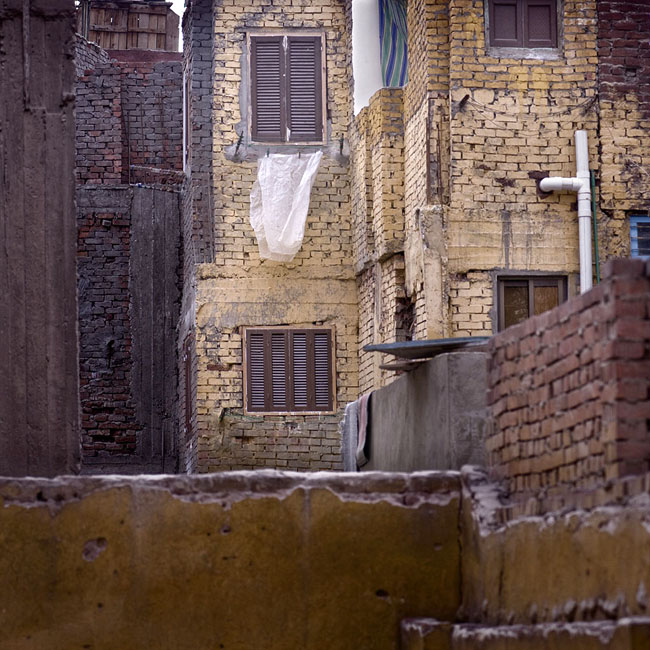
Text and images kindly permitted to be republished on this blog by the artist himself. Please visit his website for more of his photographs. It is truly work like this that constantly remind me of the abundance of details that escape me everywhere I go. What of Vancouver have I missed?
Tags: Photography
Posted in Uncategorized | No Comments »
Monday, 14 September 2009
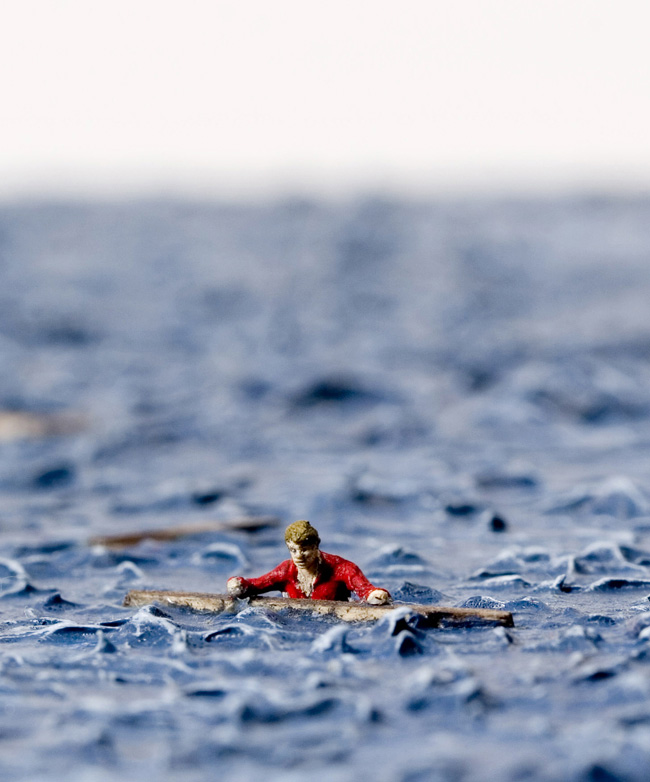
In my youth, I always wondered what it would be like to be God; to be omniscient and to have a bird’s eye view of all that is around me - a snow globe of sorts. After all, the earth is spherical and rotates all day long… It would certainly be most amusing to sit back and watch the cycle of life rolling along its course, would it not? In a sense, Thomas Doyle’s work fulfills that childhood curiosity of mine. He offers slices of life, glimpses of what God would see if he was really observing us all. I no longer believe in God, but still, I would like to watch the globe spin and the seasons pass…
“I am inspired by absurdity and bizarre behavior; the kind of real-life situations that push reality to its breaking point. My work generally depicts those kind of scenes, but takes them further, until the point that they are straddling reality and surreality – but landing with the latter. I am interested in the idea of wonder, especially as it relates to finding beauty in what is often pretty dark human material… [My work has] allowed me to draw upon the fantasies I had as a child – houses floating, people flying through the air – and call them into form in a way I never could have as a child. I’m very happy to be able to do that.”
“Though most of my works don’t originate in a concrete event, the piece “Escalation,” with its man standing before a pile of household goods with a gasoline can, is tied very closely to reality. One of my father’s fellow factory workers, on the outs with his wife, once dragged everything from the house into their suburban yard, hacked it apart with an axe, and set it aflame. I heard that story as a boy, and I never forgot it.”
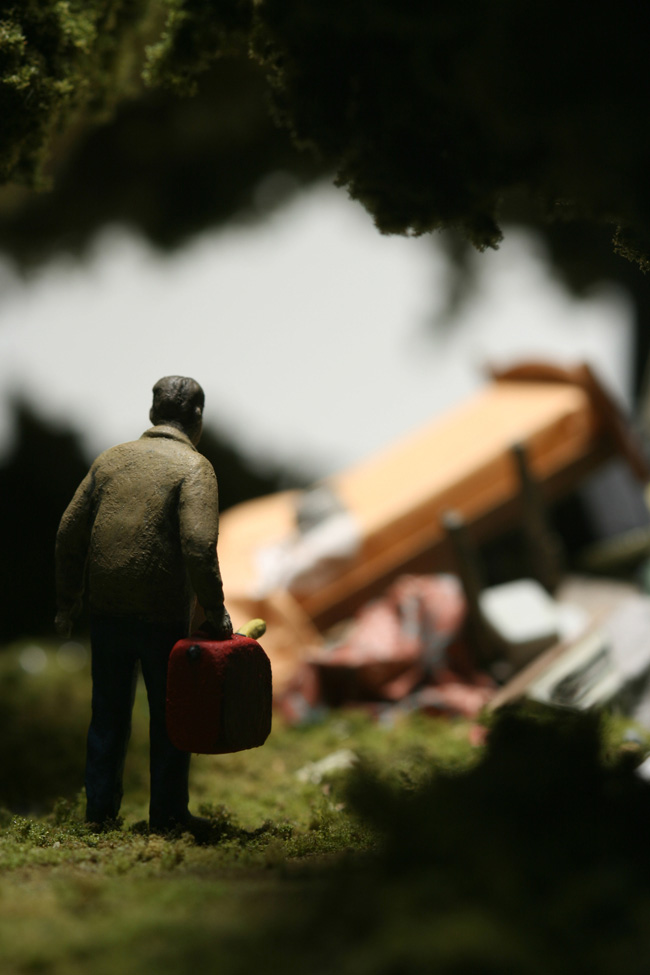
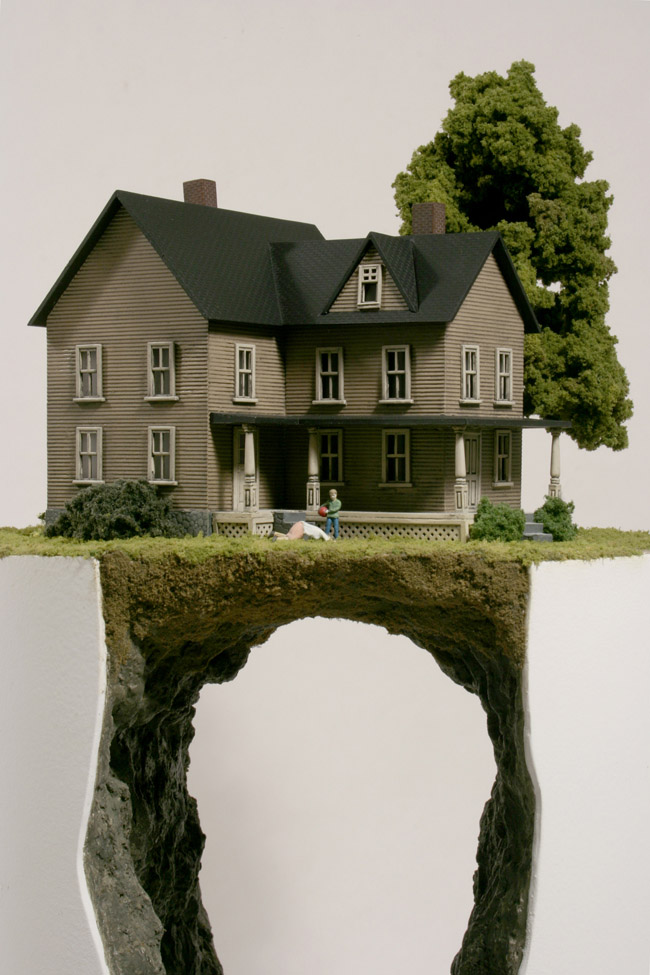
Text and images kindly permitted to be republished on this blog by the artist himself. Please visit his website to view more of his work.
Tags: Art, Sculpture
Posted in Uncategorized | No Comments »
Sunday, 13 September 2009
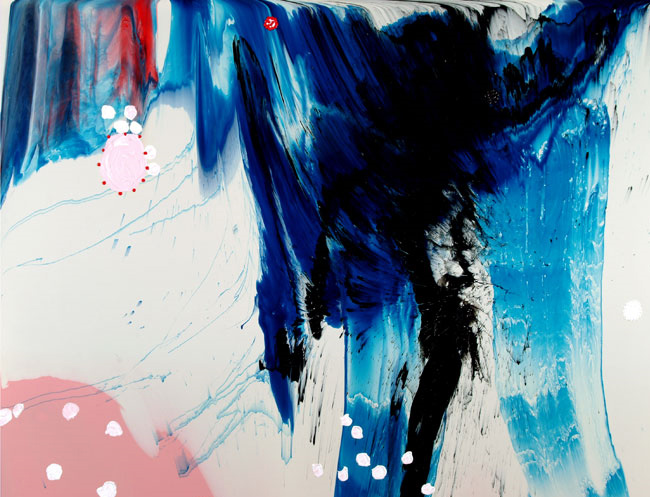
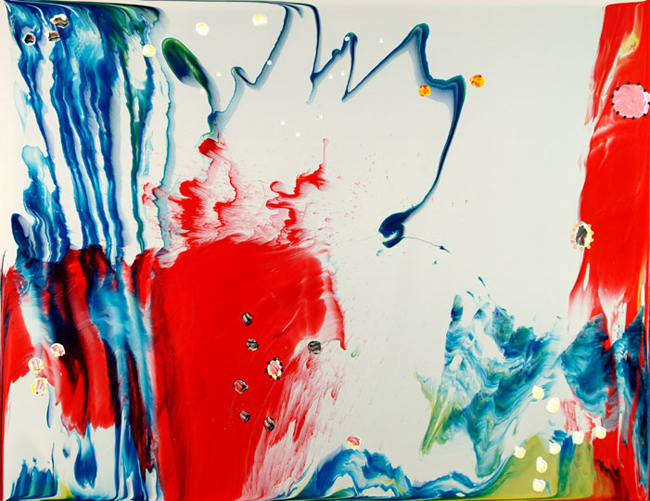
“I’ve come to visit the painter Jorge Cardarelli in his spacious studio in the Chamberi neighbourhood of Madrid… I met Cadarelli about eleven or twelve years ago… Being born in 1971, he was very young then. He had just held, or was about to hold, his first individual exhibition in the nearby town of Biarritz, made up of collages… Nowadays Cardarelli, who somehow resembles the Cocteauian “prince frivole” and regards himself as “sick with loneliness”, leads a brilliant, wandering life - and also melancholic, like any roaming - which revolves around a single thing: painting. A brilliant, wandering life compatible with many hours of concentration, meditation and study.”
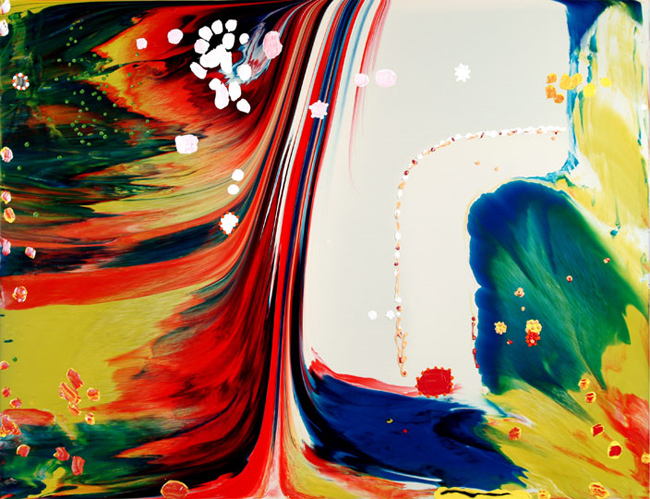
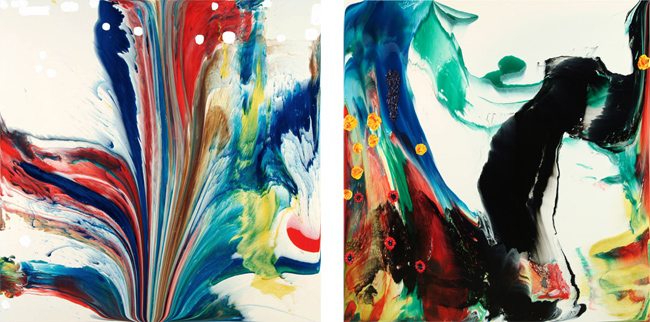
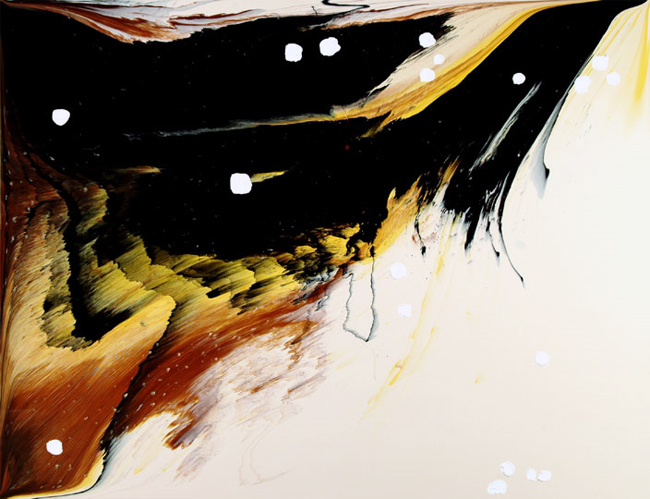
Excerpt written by Juan Manuel Bonet. Read the rest at the artist’s website.
Tags: Art, Painting
Posted in Uncategorized | No Comments »
Friday, 11 September 2009
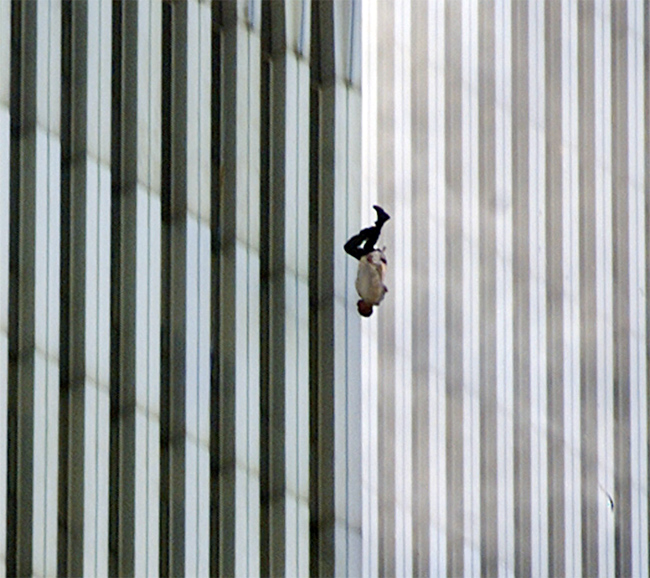
It was a beautiful, crisp September morning as I looked up from my Wall Street Journal to watch the sunrise over the East River. It was a peaceful moment, a pause to reflect on the beauty of the landscape and my place in life. That was the first thing I remember about 9/11, how sharp the horizon was as dawn illuminated lower Manhattan. I was president of a $400 million hedge fund and while bearish on the macro landscape, we were positioned for a counter-trend rally heading into that fateful day. As my driver navigated the FDR and I soaked in the scene, none of it mattered for a few, short seconds.
The first boom shook our office walls. I scanned my trading desk and asked my team, “What the hell was that?” One of our analysts yelled, “The World Trade Center’s on fire!” as we turned to see flames raging and black smoke billowing into the clear blue sky. I turned to write on TheStreet.com (TSCM), posting commentary at 8:47 AM. “A bomb has exploded in the WTC, may God have mercy on those innocent souls.” All of this occurred in a matter of minutes, if that…
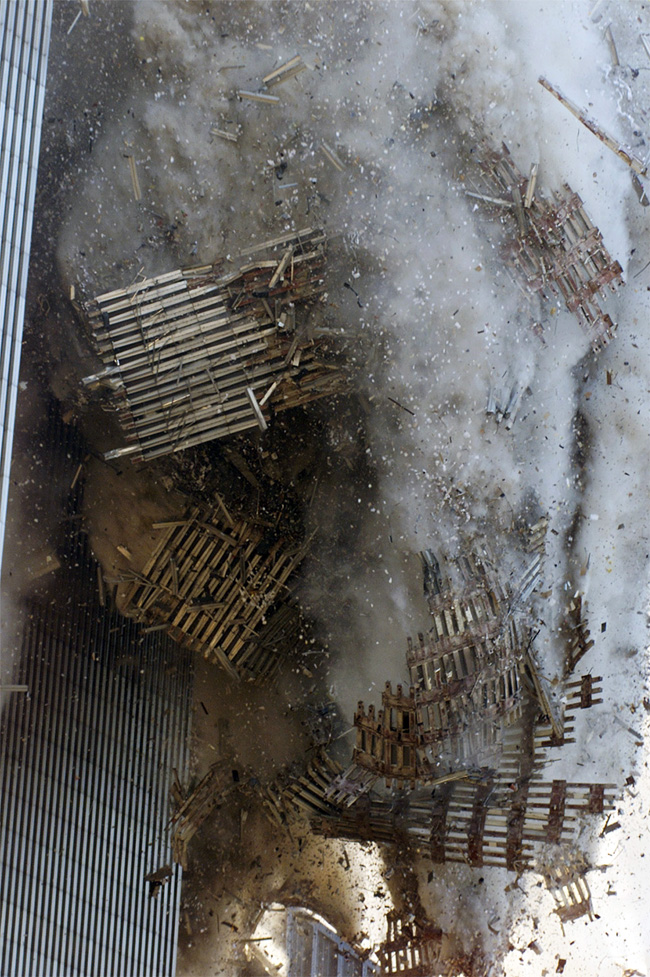
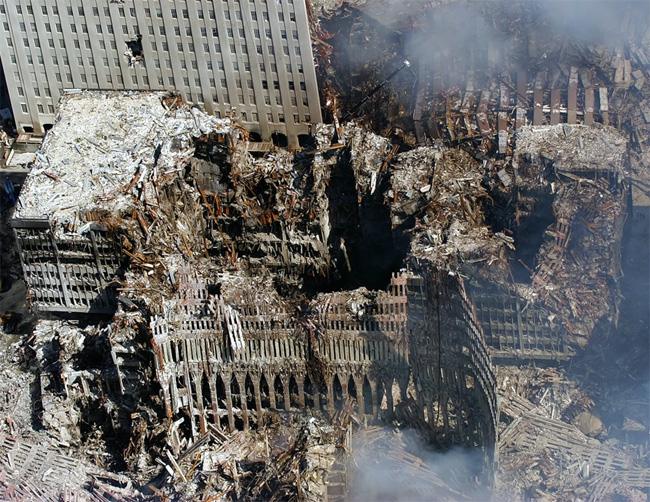
I’ve since learned that the reason we couldn’t look away from the towers was that our mind had no way to process the information. No matter how hard we tried to mentally digest what our eyes were seeing, there was nowhere to “file” images of human beings holding hands and jumping from atop the World Trade Center. It’s an image I can’t shake to this day, bodies falling through a maze of confetti; it’s a sight I wish I never saw. We huddled by our window with our mouths gaped open as somebody repeated “Oh my God!” over and over again. The second plane circled the tower and entered it from behind. In slow motion, the [explosion] again shook our office as the fireball exploded directly towards us…
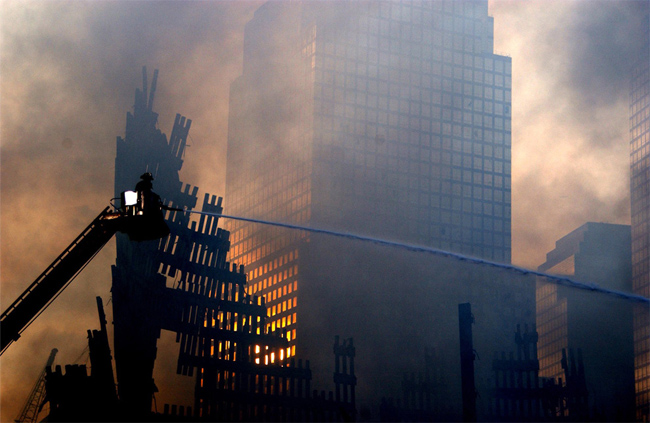
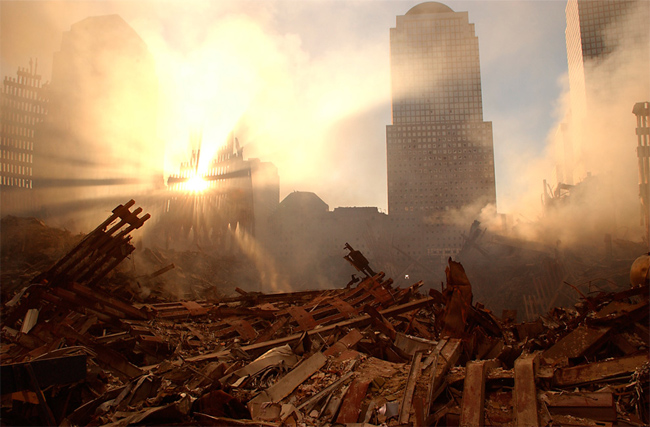
Was this really happening?
Text written by Todd Harrison. Pictures sourced from Boston Globe. Please go to National September 11 Memorial & Museum for more information.
Tags: History, Tribute
Posted in Uncategorized | No Comments »
Thursday, 10 September 2009
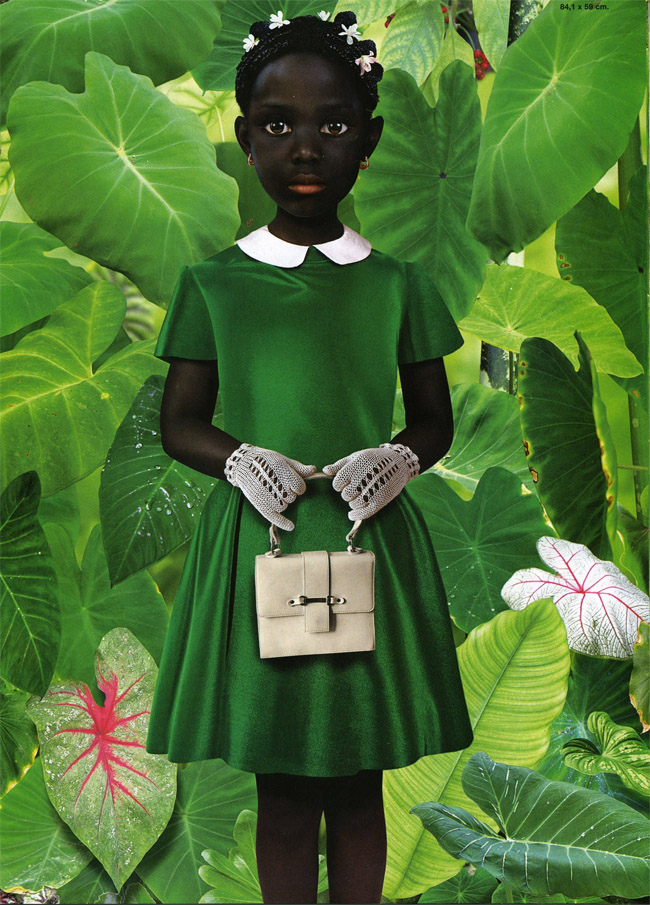
I live very much inside my head. In there, I can create my own phastasmagoric realities, a universe vibrant with life, void of strife. Emancipation was the only reason I paid little attention in class. Yet, as I aged, I gradually, unbeknownst to even myself, physical realities grounded my hypothetical possibilities. I did not daydream as much. Instead, my mental capacity reeled over the burden of adulthood. Now, as I approach my late twenties, I rarely daydream at all. I no longer talk to my imaginary friends, I no longer hear a narrator in my head… Seeing Ruud Van Empel’s work today really reminded me of that innate creativity in all children, that life that I have faint recollections of now…
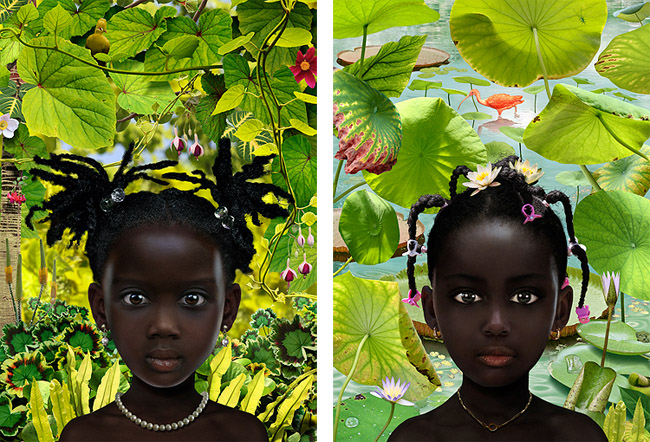
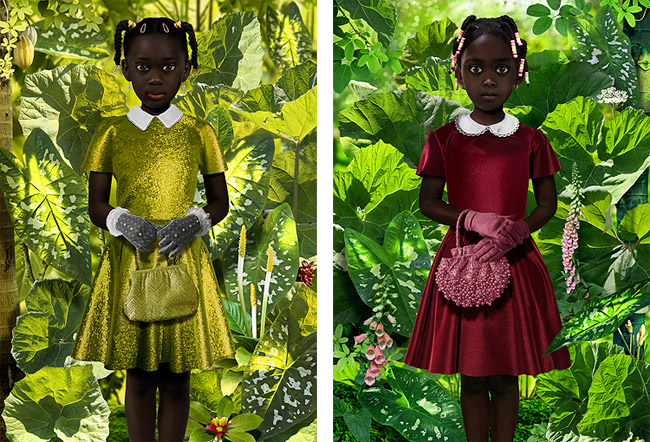
“Van Empel’s scenes are filled with ravishingly vivid colors, and dreamlike shifts of scale and space. Kids appear in their Sunday best or stripped down to shorts. He often photographs their heads, arms, legs, and outfits separately, giving many of them a doll-like appearance. He has a terrific eye for details that make the scenes pop, like a violet flower in a tangle of green foliage… On the one hand, the scenes are like mini-Edens, pure and holy; on the other, they call forth stereotypes of Aryan princesses and primitive jungle tribes. It’s dangerous, electric territory.” (Greg Cook)
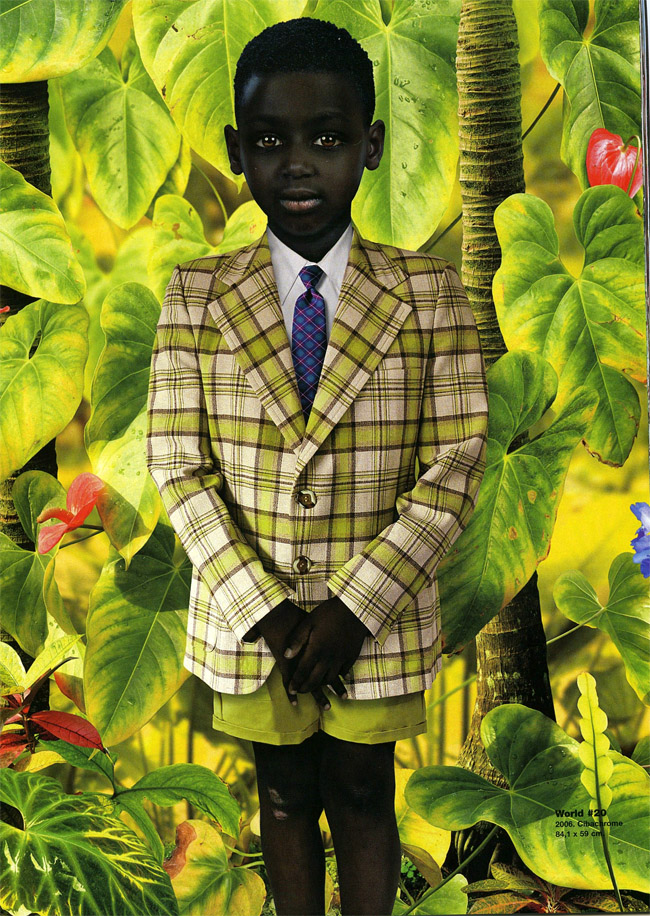
“[The picture above] is inspired by one of my own childhood photographs. When I was a kid I had to wear a suit with a tie and short trousers. I was supposed to look like a young gentleman but of course I only wanted to play wildly in the gardens and fields around our house. So it is funny to see a young boy all dressed up in a suit, and I translated this to dark children in tropical forest. In detail you can see a marking on his left knee, there is a little wound from playing to wildly but for the rest he is looking as a perfect example of a nice and good child.”

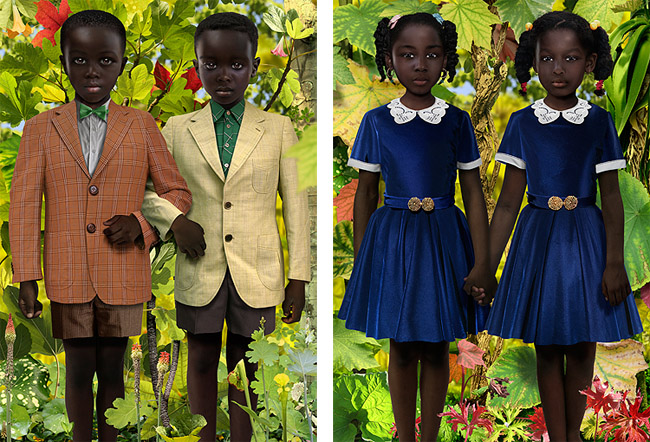
“Coincindence is very important in making collages, I photograph all kinds off things, just following my fascinations, later these photo’s happen to come together in one collage. Sometimes it takes years for a photo to get into my collages, lots of photo’s I take never get in. I use the computer to make my photo-collages, but the collages are made by hand… I don’t let the software make the artistic decisions; I… use the sissors and glue, digitally.”
Tags: Art, Collage, Photography
Posted in Uncategorized | No Comments »





















































